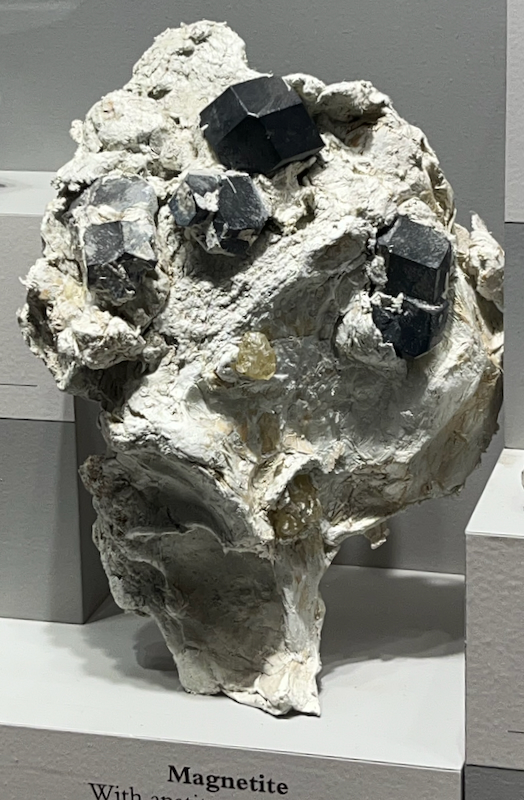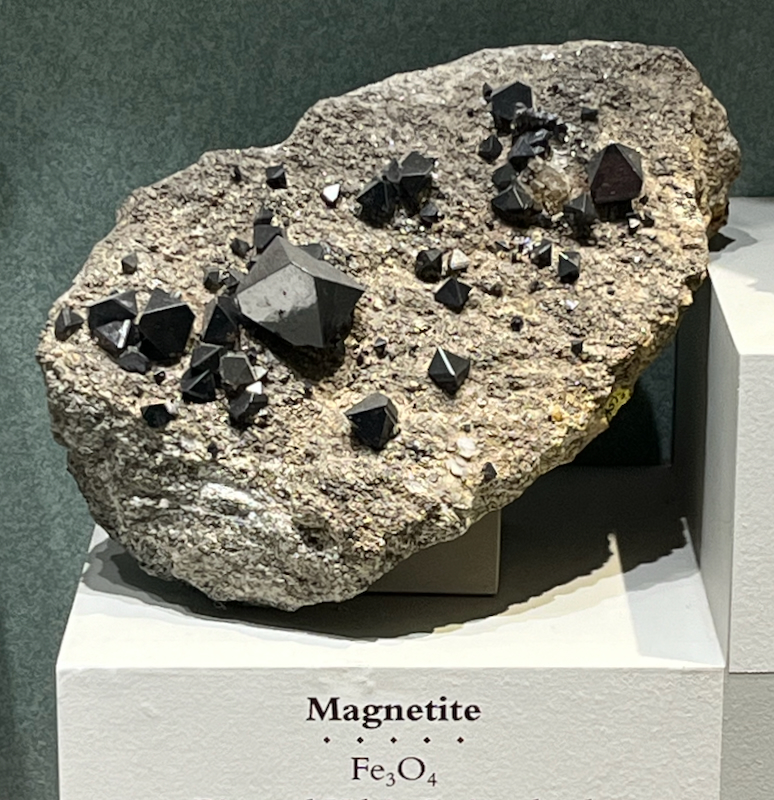Lodestone (Magnetite)
So, hmm…, what could possibly be special about magnetite…? Well, it’s just “magnet” with “ite” stuck on the end, so you’d be correct if you guessed that it’s magnetic! Magnetite (actually pronounced “magna-tite”) is an iron-based mineral that can be a magnet itself, attracting iron and steel to it, or at least will be attracted to magnets. If it’s a magnet itself, a piece of magnetite is called a “lodestone,” and such pieces were the first material used in early compasses to point to magnetic north. Scientists can use a lot of different minerals to tell different things about our planet and about rocks, such as when they formed in the Earth’s history. Magnetite is a useful mineral to today’s scientists because when they find it in rocks, they can tell things about the Earth’s magnetic field when the rock formed or where the rock may have come from when the tectonic plate it was on was moving around the world. That’s because magnetite has a direction to its magnetism when it forms, and that direction for magnetite that forms at different times in our geologic history is different too. As for collecting magnetite, when you find crystals of magnetite in a rock, often the part that sticks out will be a pyramid shape, and if the crystal pops out, it looks like two pyramids stuck together at the base. Aside from in rocks, one place people find magnetite is in their pan when they’re panning for gold. When you swish your gold pan back and forth in the water, eventually almost everything that’s not valuable or very heavy gets washed away, leaving you with what gold panners call “black sand,” which is mostly magnetite. Of course, hopefully there’s some gold in there too!
| Formula | Group or Type | Shape | Hardness | Specific Gravity | Streak | Luster |
|---|---|---|---|---|---|---|
| Fe2+Fe3+2O4 | — | Isometric | 5.5–6.5 | 5.175 | Black | Metallic to submetallic, or dull |



